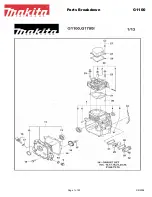
15
also be upgraded to an eight channel processor simply by inserting another card,
whether to accommodate larger rooms or more sophisticated audio processing. It
is just a matter of what you want the system to do. That way, you can have the
system the way you want it to work, rather than the way we
thought
you’d want it
to work. (After all, a no-compromise, high performance audio system should not
be “one size fits all.”)
Moreover, the PDSD was designed from the outset to be a
high end
multichannel
product.
All
channels use full 20-bit multibit D/A converters rather then the less
costly single-bit converters (often called “Sigma-Delta” or Delta-Sigma” converters)
commonly found in multichannel products. The PDSD uses thes more costly D/A
converters for the simple reason that they sound better.
audio computer
Conventional audio DSP design requires the addition of costly hardware every
time you wish to add functionality. In these designs, Dolby Digital (AC-3) has its
own, dedicated DSP chip and associated supporting circuitry; so does DTS; so
does MPEG. Want a new feature? Buy more hardware.
This strikes us as ridiculous.
You would not buy a computer for writing, knowing that you would have to buy
another computer for calculations, and another for graphics, and a fourth for data-
base work. To do so would be enormously wasteful, as expensive microproces-
sors would sit idly while you were doing something else.
The same is true in “audio computers.”
The Digital Surround Decoder is the first of a new generation of power DSP
(Digital Signal Processing) engines that can load software in and out of memory
dynamically, as your computer does. Want to listen to a Dolby Digital soundtrack?
The PDSD loads the appropriate software and runs it. Movie over, want to listen
to CD? No problem. Oh, the CD is DTS-encoded? Still no problem — the DTS
software is loaded and runs automatically.
Madrigal was an early partner of Motorola in developing the next generation of
DSP chips, the 56300-series. Designed to replace the aging 5600X series, these
new chips offer twice the performance and vastly more flexibility. With three such
chips in each Digital Surround Decoder, we have the power to run any of these
programs as well as our own proprietary digital filtering algorithms.
Why did we develop such advanced technology? Simple: better performance for
today,
and
for tomorrow.
Содержание Digital Surround Decoder
Страница 1: ...PR O C E E D Digital Surround Decoder...
Страница 82: ...82 Installation Notes...
Страница 83: ...83...
Страница 84: ...84...
Страница 85: ...85...
Страница 86: ...86...
Страница 87: ...87...
Страница 88: ...88...
Страница 89: ...89...
















































